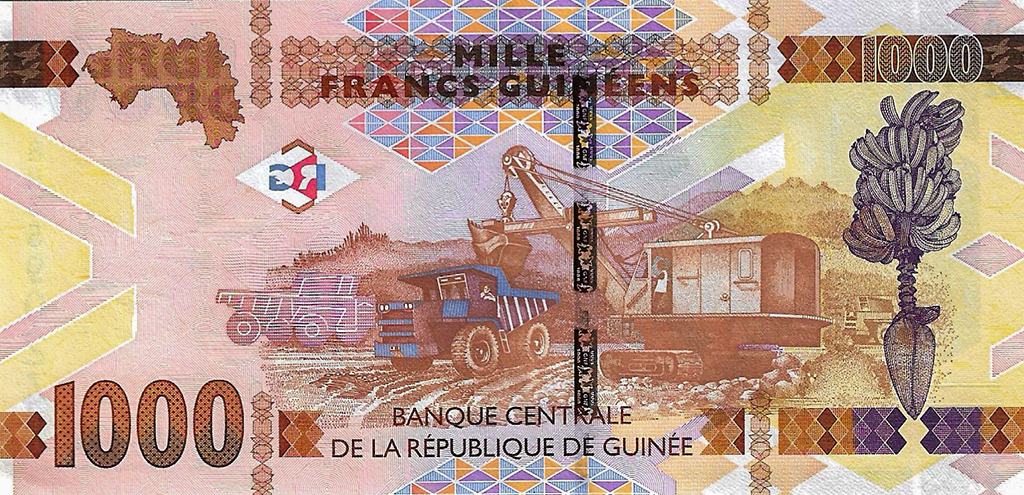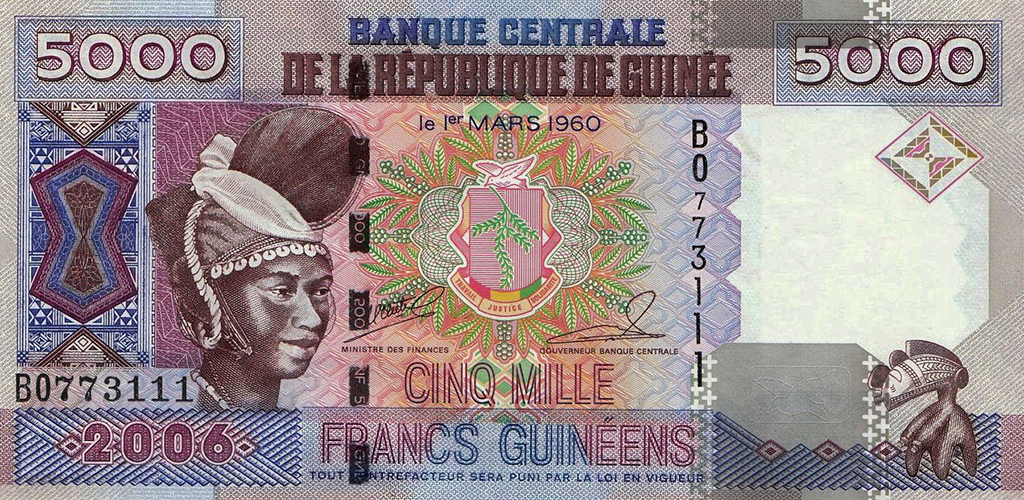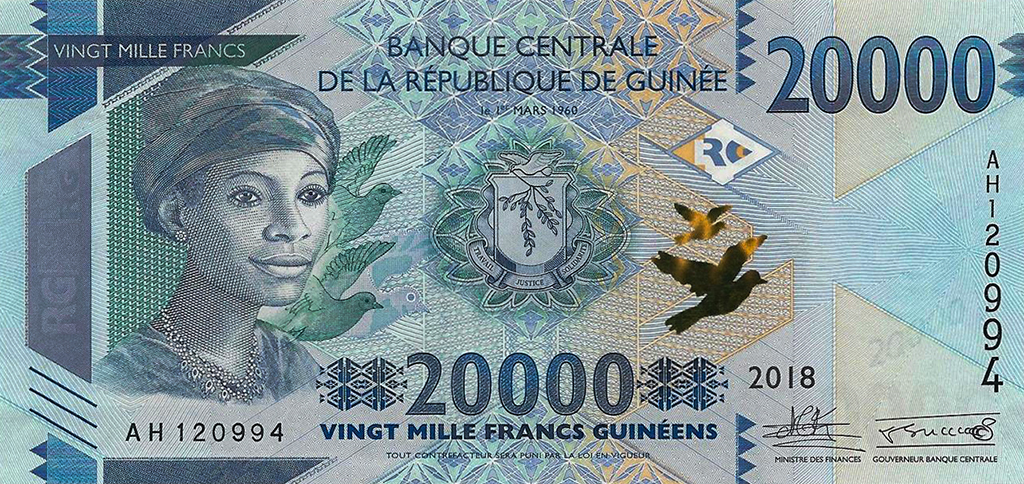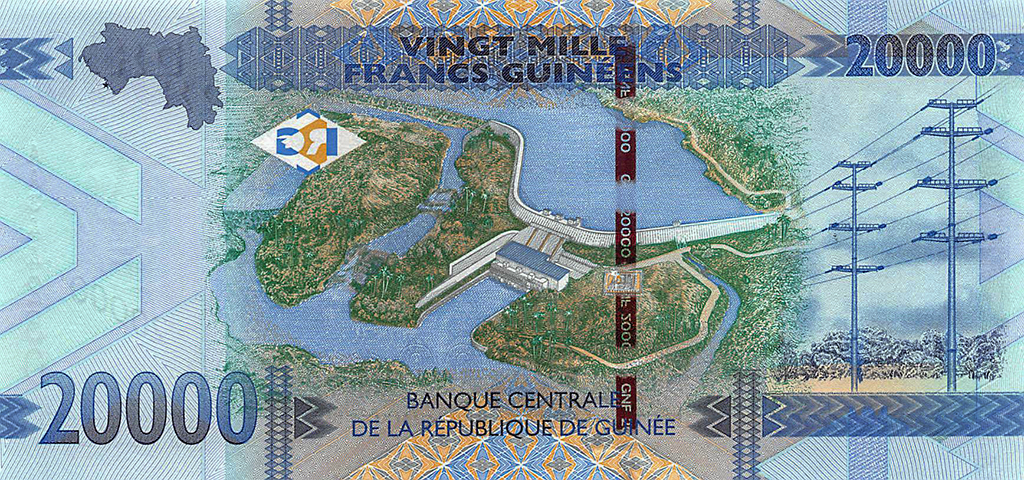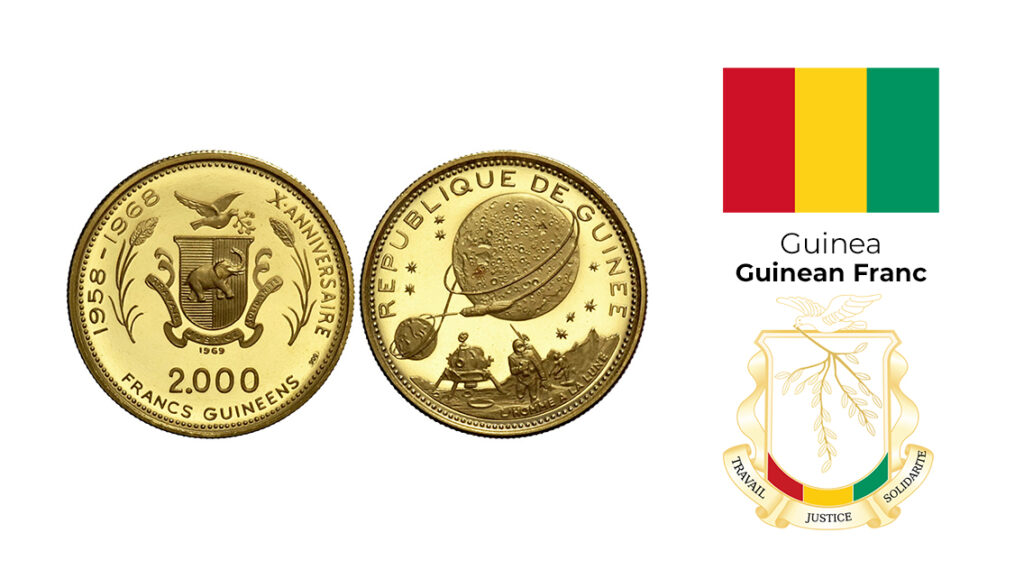
The flight of the Guinean Franc

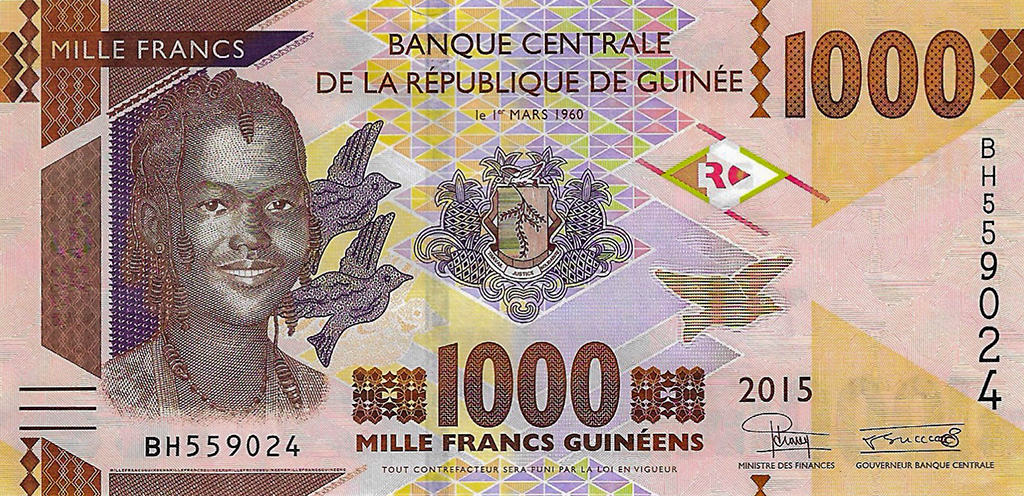
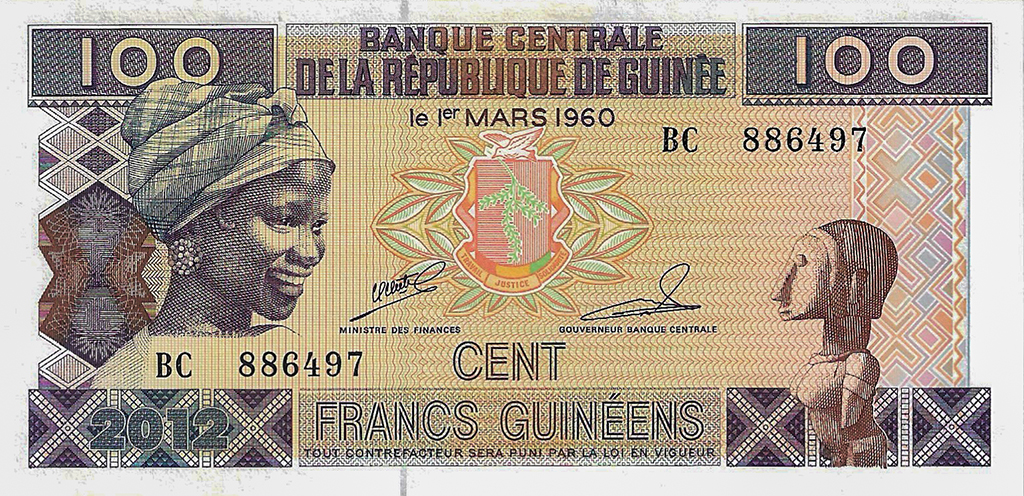
In the remoteness of coastal west Africa, Guinea, is a nation of insignificant merit and popularity. Occupying a landmass rich laden with precious minerals – diamonds, gold, iron – Guinea is world’s second largest producer of Aluminum Ore Bauxite. Despite this richness, the country largely remains an agrarian economy. A total of 24 ethnic groups pool in to create the Guinean populace that is predominantly Muslim. After independence from France in 1958 CE, Guinea has been fighting unrest and anarchy with rampant violation of human rights. The first monetary system in Guinea was launched by the French; first in French West African Francs and later in CFA (Colonies françaises d’Afrique) Francs between 1945 and 1958. Independence brought in Guinean Francs in 1959 issued by Banque Centrale de la Republique du Guinee that was later changed to Syli in 1971 (1 Syli = 10 Francs). Inflation resulted in revaluation and return to Guinean Franc in 1985 with 1 Guinean Franc = 1 Syli.
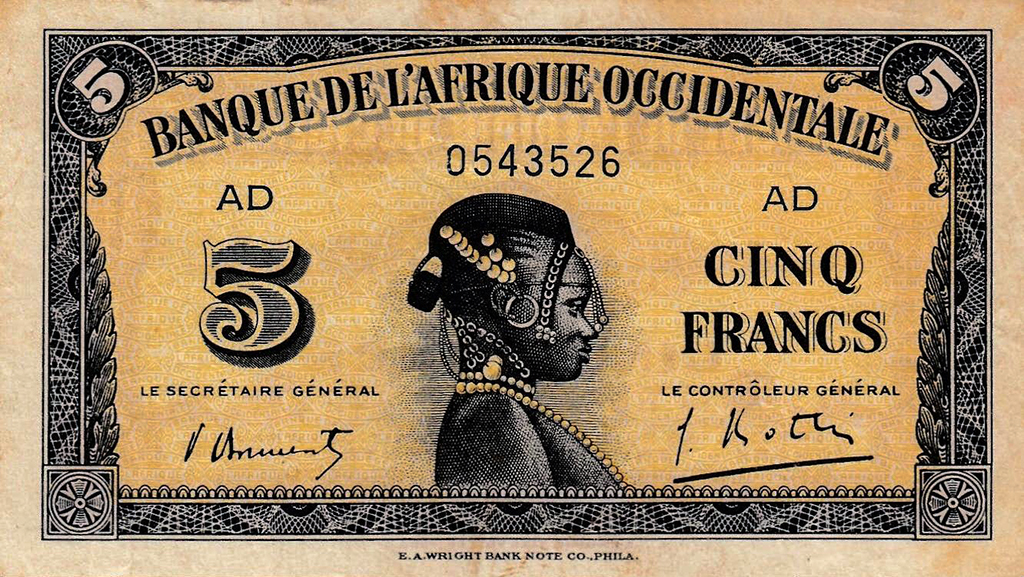
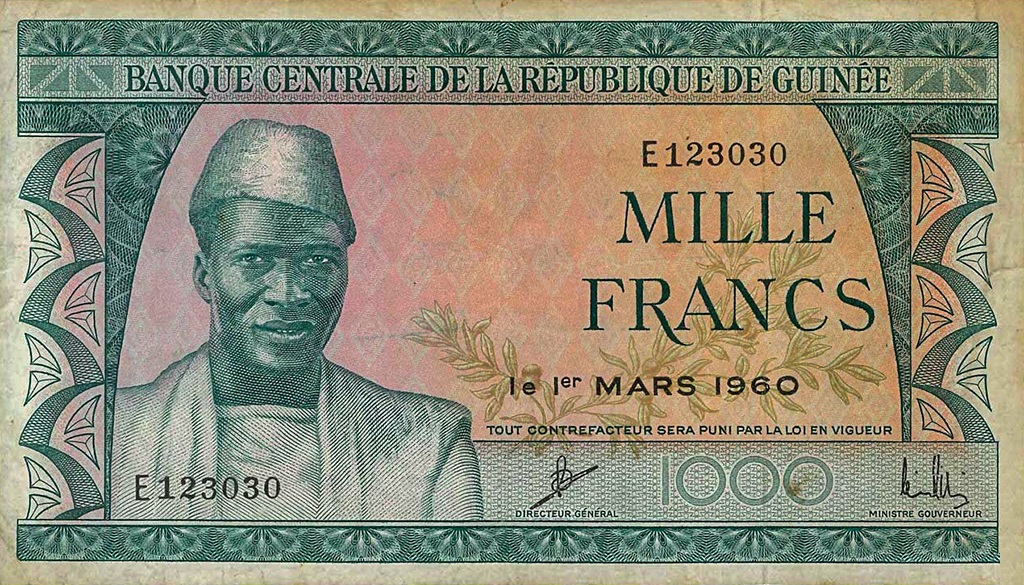
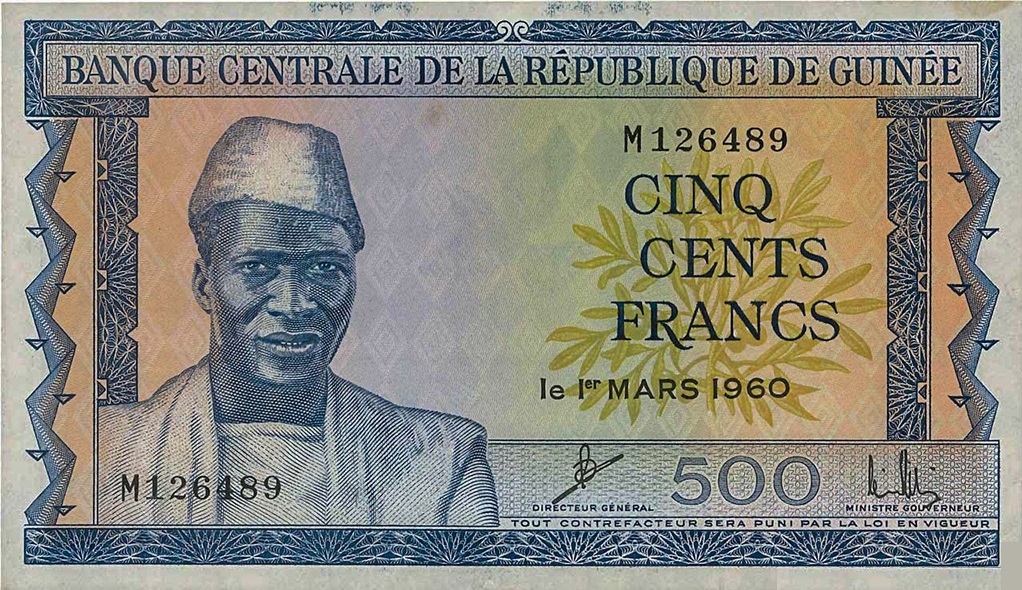
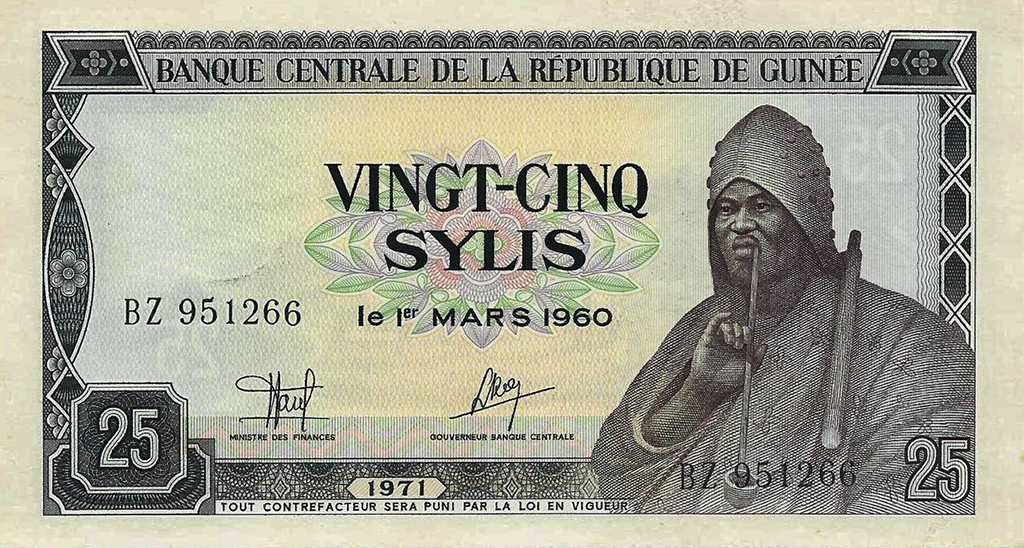


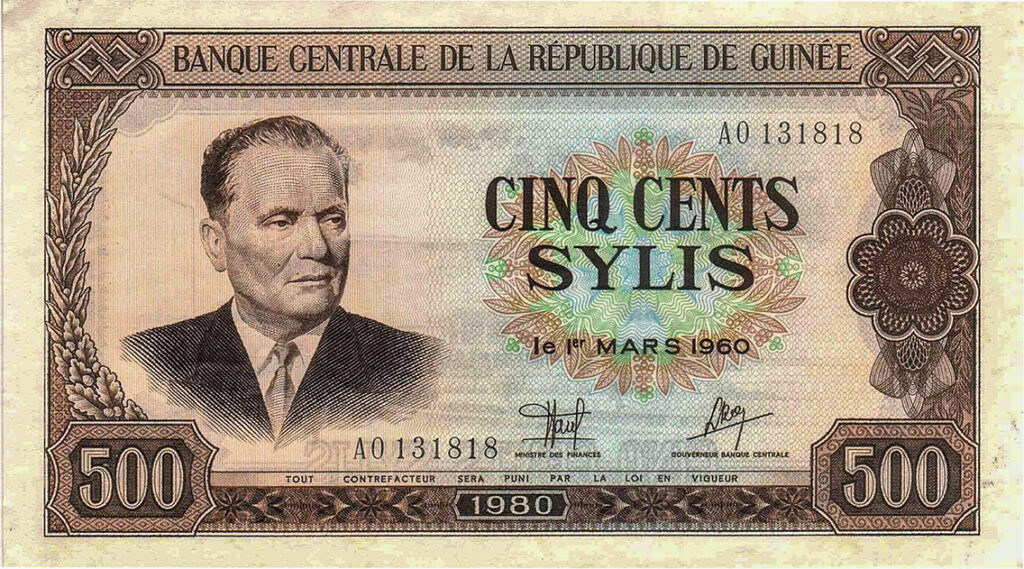
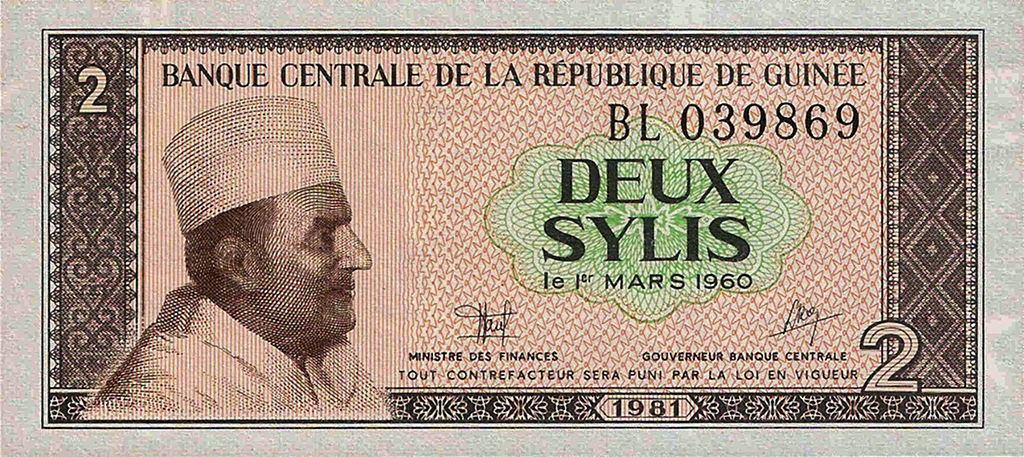
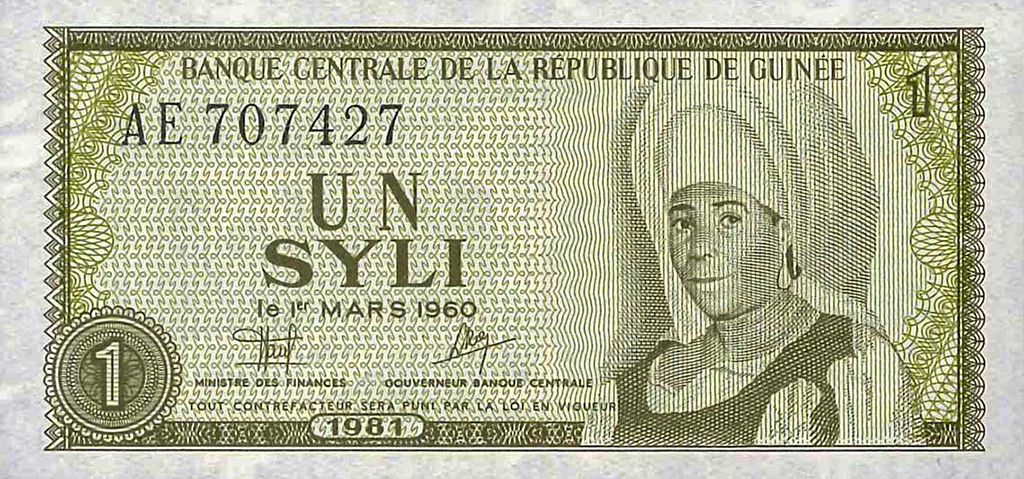
Main Features | French banknotes have often been described as paintings rather than simply paper money for their high standard of artistry. The same standards have been applied to banknotes made for the overseas French colonies without imposing the visual culture. Maintaining the overall homogeneity, the banknotes for Africa were designed to showcase the aboriginal culture. This colonial styling continued late into the 21st Century and only in recent the times, the Guinean Franc has completely shed the remaining traces of colonial rule. The new series launched by Banque Centrale de la Republique du Guinee has a refreshing look and feel with the front face having (i) Numerals for denomination at 2 places (identically-sized), Serial Number at 2 places, and Year of Issue at right-bottom (ii) Texts for denomination, issuing authority – Banque Centrale de la Republique du Guinee – and designation of two signatories and (iii) Images of a Guinean lady in company of flying birds and the national emblem blended aesthetically with geometric designs. On the back, there are numerals for denomination in two sizes at diametrically opposite corners, texts for denomination in words and Banque Centrale de la Republique du Guinee and images depicting the modern Guinea. An outlined map of the country is also shown at the top-left.
